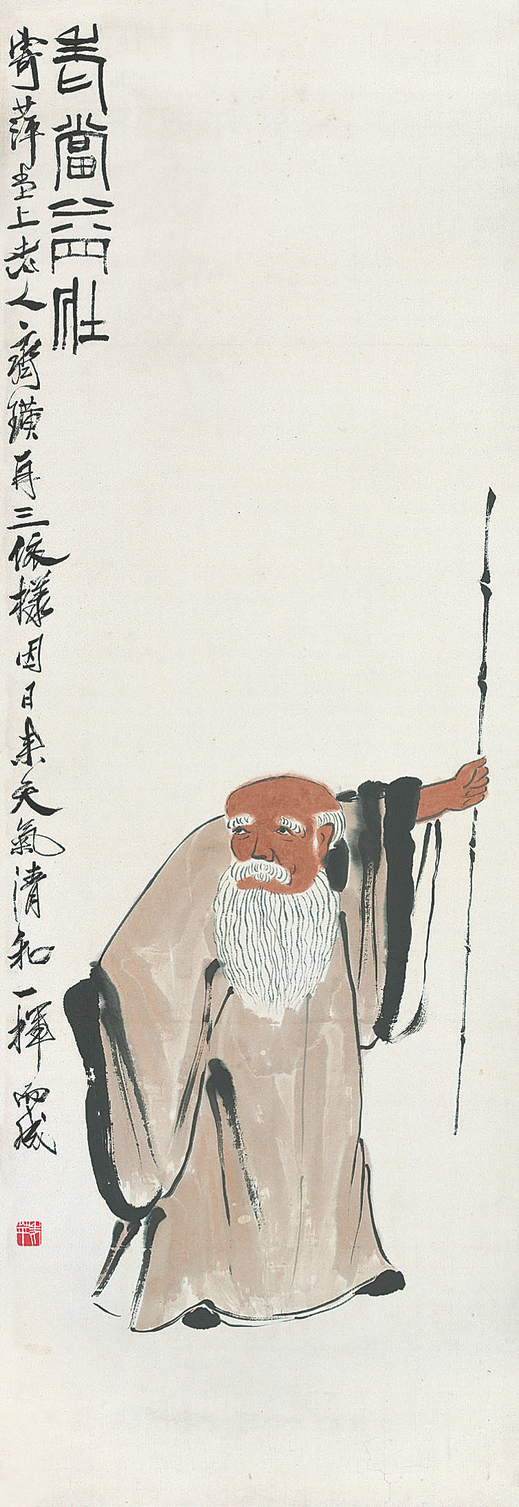

Traveling far to experience the vastness of his world mattered a lot to modern art master Qi Baishi (1864-1957) during his long career.
Beginning in 1902, the native of Hunan province undertook five long-distance journeys across the country, during which he was exposed to different landscapes and folklore.
Inspired by the dynamism of nature, Qi's meticulous brushwork evolved into a carefree, semiabstract style to depict the vibrant happenings he saw with his eyes. This important stylistic shift promoted him from an unknown amateur painter from the Hunan countryside to the higher cultural circles of Beijing. He was ultimately deemed the "people's artist".
Now, a series of events to commemorate the upcoming 160th anniversary of Qi's birth is underway, taking his works to more corners of the world.
The Beijing Fine Art Academy, which Qi was named the first and only honorable dean of, has organized the events. The academy has a large collection of Qi's work, donated by the artist himself and his family and friends. It is taking a selection of these revered works to Europe for cultural exchanges, as part of its global initiative to celebrate Qi's work and to expand the influence of his art and beliefs.
Blooming Flowers and Full Moon, an exhibition of Qi's paintings, is now running at the China Cultural Center in Stockholm, Sweden, through to Oct 27. Last month, another exhibition of his art was shown in Berlin, Germany, while a lecture on Qi's life and work was held in Riga, capital of Latvia.
Wu Hongliang, dean of Beijing Fine Art Academy, says the events are introducing a European audience to the world Qi created through his art and imagination. Small insects, aquatic animals, mountains, blooming flowers and other creatures, which made Qi a household name in his home country and one of its most popular artists, are featured.
"He was a legendary figure in the 19th and 20th centuries," Wu says. "In his early years, he made a living as a carpenter, a wood engraver. At the age of 55, he relocated to Beijing to start again, and he worked so hard to be accepted by people there. He was also well-versed in calligraphy, composing poems and doing seal engraving. He was able to present wit and an easygoing attitude to life to the viewers of his works."
Qi wanted his art to be different and he liked to portray extraordinary aspects of ordinary things, a concept he revisited often in his creations, Wu says.
For instance, in one of the paintings on display in Stockholm, Fish, Qi left the middle part of the paper — about two thirds — blank. He painted some fish, mostly their tails and dorsal fins, in the upper and bottom areas, leaving his audience room to imagine the movements of the fish outside the confines of the paper. The painting is a classic example of Qi celebrating the vigor of life in something as common as the movement of fish. While it might seem an unusual technique, it is actually a demonstration of the Chinese painting technique of liubai (leaving blankness) and the wisdom behind.
Yin Peng, a senior member of the China Arts and Entertainment Group, which co-organized the exhibitions in Berlin and Stockholm, says, with his innovative, highly expressive brushwork, Qi was able to present the characteristics of classic Chinese art and also record the daily lives and changes of his time.
linqi@chinadaily.com.cn